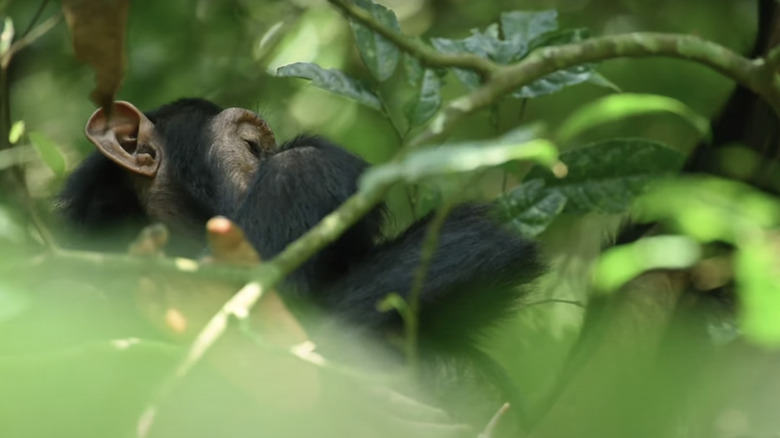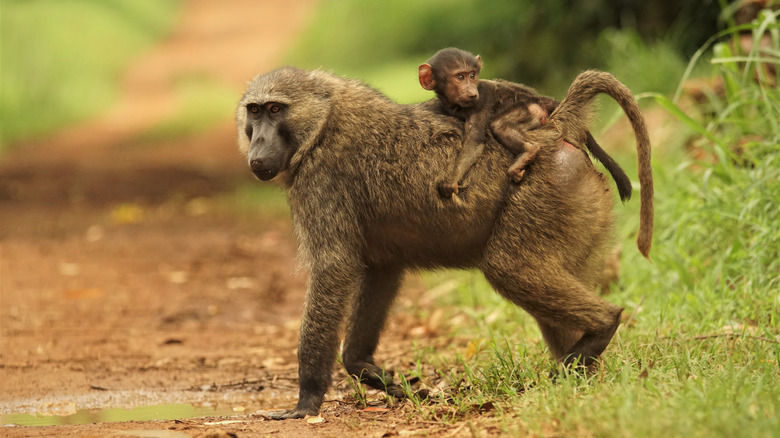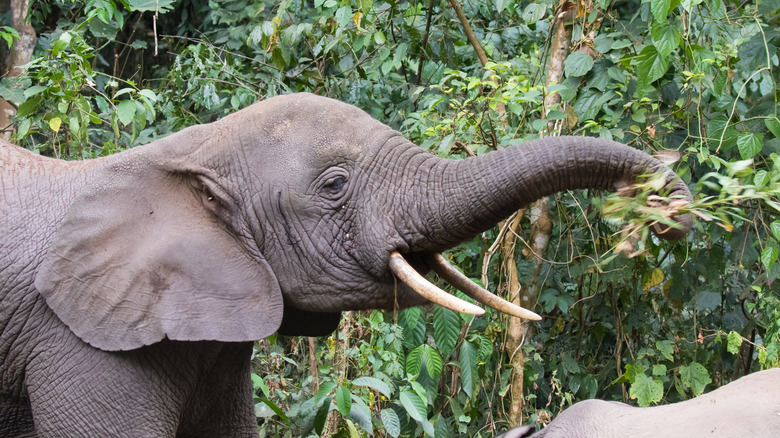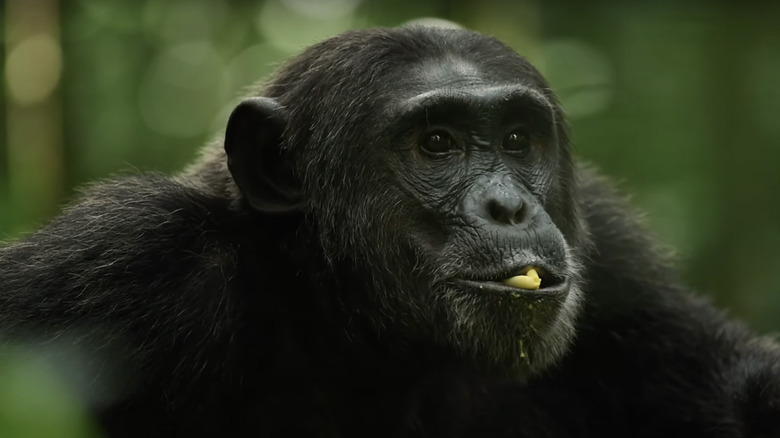Uganda Wildlife Authority via YouTube
Kibale National Park is a vibrant and diverse tropical rainforest located in Southwestern Uganda. The park is one of the most popular tourist destinations in Uganda because of its incredible biodiversity. The 300-square-mile park is primarily a tropical rainforest; but within its borders, visitors can also find swamps, grassland, and savanna, all of which are unique habitats for amazing animals.
In particular, people fly to Kibale National Park from all over the world because it is one of the best places on Earth to see communities of endangered chimpanzees living free in the wild — but they aren’t the only fascinating species that can be found in Kibale. It is sometimes called “The Primate Capital of the World” because there are 13 types of primates that make the park their home. More than 100 other species of mammals live there, too, including the beautiful and elusive forest elephant and more than 370 species of birds.
Chimpanzee Trekking

Uganda Wildlife Authority via YouTube
For travelers looking to catch a glimpse of chimpanzees in the wild, Kibale National Park is one of the best bets. This is an exhilarating experience for tourists, but it is also a vital safe harbor for endangered chimpanzees.
The park is home to at least 1,000 chimpanzees living in naturally formed communities throughout the forest. Four of these communities are comfortable with humans and can be seen on chimpanzee trekking tours, during which visitors are taken into the park first thing in the morning to spot the chimps as they come down from their nests in the treetops above, or in the evenings as they return to the trees. The experience is a private and intimate one, as only six people at a time are permitted to accompany rangers to look for chimpanzees. Chimpanzee tracking permits are required to join the excursion, and visitors are allowed to spend around one hour watching the chimpanzees at a distance.
Nature walking and hiking

Kibale National Park is most famous for its chimpanzees, but there are many other animals there to see, including many other species of primates like olive baboons and the highly endangered Uganda red colobus monkey. These walks can be the best way for visitors to experience all that Kibale has to offer firsthand. While there is no guarantee that any particular animal will be visible at a particular time, there is a good chance of seeing African forest buffalo and giant forest hogs.
A small group of travelers are accompanied by a guide who points out and identifies interesting plant life, birds, and animals along the way. While most nature walks are a day long, it is possible to book a hike that lasts between two and six days and spans the entire length of the park, giving tourists the opportunity to see everything that lives in the forest. For those looking to see tree bears (pottos), bush babies, and civets, you can even book night walks.
The elephants of Kibale National Park

Jukka Jantunen/Shutterstock
In 2019, East African Trails estimated that 566 elephants live within Kibale National Park. While it is not advised to seek them out, it is possible that visitors will come across some elephants while exploring.
Most people are familiar with African savanna elephants. They are massive and have larger ears and tusks than their Asian cousins. Fewer people can picture the elusive African forest elephant, and that is by design. These smaller, yellow-eyed elephants live deep inside African rainforests and are rarely seen. As implied by their names, these two types of elephants enjoy vastly different habitats, so they are rarely in the same places. In Kibale National Park, their habitats overlap.
As reported in a 2023 study published in Oryx, recent studies of the elephants in Kibale National Park have found that not only are both types of elephants present — they are also interacting with each other — and in some cases, interbreeding. It appears that not only are forest elephants and savanna elephants willing and able to breed with each other, but the resulting hybrid elephants are also likely to breed with either forest or savanna elephants, as well as other hybrids, which can be indicative of a unique, blended future.

